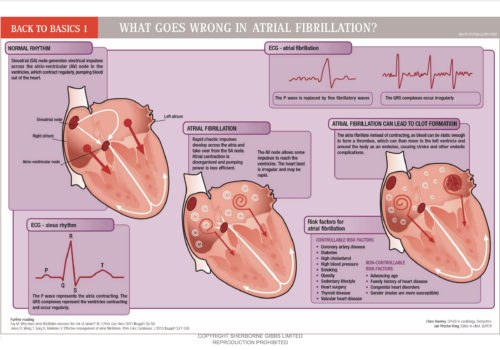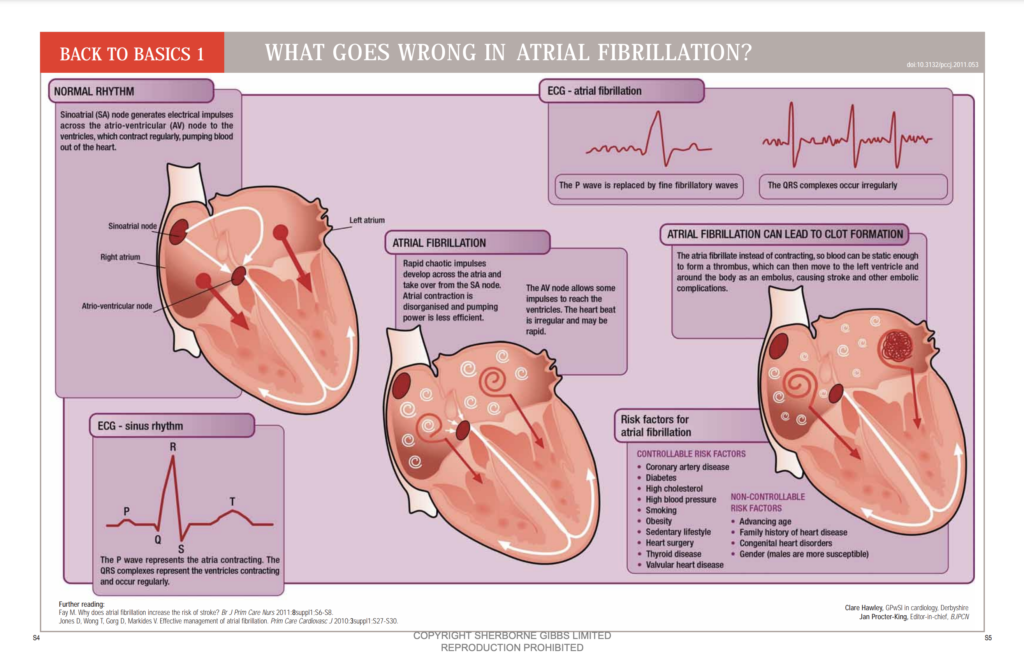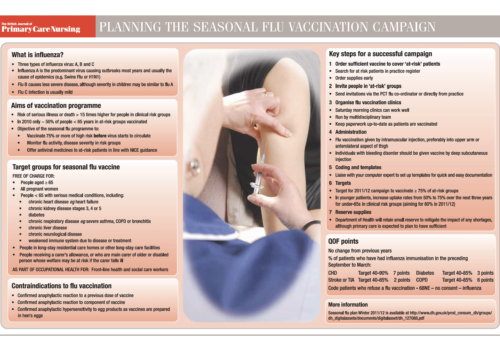
Going back to basics in cardiovascular disease: Editorial
There are 28 cardiac and stroke networks in the country. They play an important part in implementation of national strategies, enabling high-quality services to be planned and delivered to patients within the framework of primary and community care.
One of the most useful contributions of the networks is provision of education and training for primary care staff. The “Back to Basics” material in this supplement forms the backbone of what is presented at study days. The articles cover some of the most common cardiovascular conditions that are seen in primary care, showing clearly what causes the symptoms, how best to assessand manage patients, and how the treatments actually work. They help healthcare workers both to understand these conditions and to explain them to patients, and therefore really improve patient care.
Going back to basics in cardiovascular disease: Editorial 2
Cardiac and stroke networks enable change and support the implementation of national strategies, such as the National Stroke Strategy which was published in 2007. There are 28 cardiac and stroke networks in the country: they play a fundamental role in bringing together commissioners, providers and patients to plan and deliver high-quality services for their populations.
Editorial
Keep up the good work’ is the theme of this issue of BJPCN, with latest figures showing that the structured care we provide to our patients is helping to save lives. But we are not there yet – so we are looking at remaining challenges in managing cardiovascular disease and what more we can do to really make a difference to our patients’ lives.
The ultimate cholesterol lowering plan step-by-step
In the last two issues of BJPCN, we have provided you with the scientific evidence for the Ultimate Cholesterol Lowering Plan (UCLP) and how its impressive cholesterol-lowering impact can help save lives from coronary heart disease and reduce the £3.3 billion financial burden to the NHS.1 In this issue, we discuss how you can apply the UCLP in your day-to-day practice to bring about clinically significant cholesterol-lowering results for all your patients.
Ensuring an early diagnosis of type 1 diabetes to prevent ketoacidosis
The onset of type 1 diabetes is usually rapid, taking patients and their relatives and friends, and even healthcare professionals by surprise. Diagnosis can involve some degree of diabetic ketoacidosis (commonly referred to as DKA). It is estimated that approximately 30% of newly diagnosed children seen by a healthcare professional have problems related to their diabetes before diagnosis, which suggests that practitioners are missing opportunities to diagnose type 1 diabetes at an earlier stage and possibly avoiding DKA. In this article, we explore how primary care staff can achieve earlier diagnosis of type 1 diabetes.
Preventing delayed diagnosis of type 1 diabetes: time to act
Explaining the concept of absolute cardiovascular risk to patients
Putting Prevention First – the national strategy for assessing cardiovascular risk in everyone between the ages of 40 and 74 years – is here to stay, regardless of any changes in the NHS. This strategy is based on assessing a patient’s individual risk of cardiovascular disease and, where this risk is significant, offering them measures to reduce this risk. In this article, we look at how to achieve a key step in this process: explaining the complex concept of absolute cardiovascular risk to patients so they understand what’s at stake when deciding whether or not to take their statin or antihypertensive.
BATMAN’s mission: reduce the impact of stroke
In this new series, BJPCN interviews key people leading major initiatives in the prevention and treatment of CVD and diabetes. Alastair Bailey, who leads the Brain Attack Team (BAT) at Leeds Teaching Hospitals Trust explains how the team ensures that patients with stroke receive prompt thrombolytic treatment to improve outcomes.
Back to Basics: Planning the seasonal flu vaccination campaign
The big hitters for quitters
The impact of smoking on all aspects of health – physical, psychological and socioeconomic – is so serious that helping people to quit is a key priority for anyone working to improve health outcomes. In this article, we look at the best way to encourage smokers to quit, how to increase the quit rate in smokers who have decided that the time is right for them to stop, and review the latest information on pharmacological options for smoking cessation.
Raising the issue with patients: let’s talk about sex
The quality of many of our patients’ lives would improve if they had the choice and ability to be sexually intimate. It is relatively common for men who suffer from cardiovascular disease or diabetes to suffer from erectile dysfunction (ED). They often feel too ashamed to initiate sex with their partner, or start a new relationship, because they are unable to gain or maintain an erection. They can become socially isolated and aviod physical contact. As healthcare professionals, we owe this group of patients an opportunity to talk about their sexual problems and to offer them support and treatments. But how do we open up a discussion about sex?





















